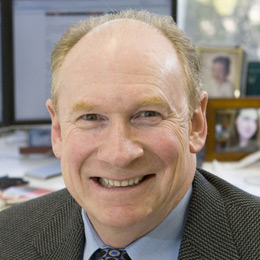“Mathematics education in the United States was initially structured . . . to prepare privileged, young, white men for entrance into elite colleges.”
“Teachers need to work consciously to counter racialized or gendered ideas about mathematics achievement.”
“A ‘color-blind’ [teaching] approach allows such systemic inequities to continue.”
These passages introduced the first draft of California’s proposed overhaul of math education, one that was intended to upend traditional mathematics education by using “trauma-informed pedagogy”; by raising students’ “sociopolitical consciousness”; by inserting “social justice” into math lessons; by rejecting “Whiteness” and the idea that there is a distribution of learning abilities among students.
The first draft was widely criticized. More than 1,200 math and science teachers and STEM professionals signed a letter expressing concerns about the new curriculum and teaching approach:
For all the rhetoric in this framework about equity, social justice, environmental care and culturally appropriate pedagogy, there is no realistic hope for a more fair, just, equal and well-stewarded society if our schools uproot long-proven, reliable and highly effective math methods and instead try to build a mathless Brave New World on a foundation of unsound ideology.
The second draft has just been released, and the public now has roughly 60 days to offer comments at https://www.cde.ca.gov/ci/ma/cf/.
To try to make the second draft acceptable, the authors have eliminated triggering phrases such as “White privilege” and “White supremacy” and have broadly toned down the tenor of the first draft. This is almost certainly a strategic decision on the part of the authors, who saw how a similarly aggressive “anti-racist” approach that was used with California’s new Ethnic Studies mandate led to over 100,000 stakeholders writing to the California Department of Education (CDE) about the divisive and unproductive nature of that curriculum. That first draft is now nowhere to be found.
But even though the packaging of the new math curriculum has changed, the content remains flawed, including doubling down on eliminating classes for high achievers, and continuing to insist that traditional math teaching is to blame for the failure of many minority students to learn, with Hispanic and Black students failing competency at rates as high as 90 percent in some districts.
Something is indeed terribly wrong with such low achievement levels, but racism per se is not the problem. Asian American students are by far the highest math achievers among student demographic groups, with nearly 70 percent testing at competency or higher, compared to White students, who test at less than 50 percent at this level.
So what is wrong? There are too many teachers in California’s K–12 system who do not know mathematics deeply enough to successfully teach math and engage their students in the subject. Moreover, the teachers who are less mathematically competent tend to teach in poorly performing schools that have large Hispanic and Black student populations. Mathematical aptitude of schoolteachers is significantly below that of the average US college graduate, and more broadly, is behind average level of math competency in teachers in many other countries, including the Slovak Republic and Estonia, which have far fewer resources to invest in education than does the United States.
Time and again, the proposal criticizes teaching methods based on memorization. But a significant amount of intellectual recall is needed in mathematics and in all technical fields. And while we all aspire for students to learn material beyond simply memorizing it, this can’t be realistically expected without many teachers having a much deeper understanding of math than they presently do.
For example, take the famous Pythagorean theorem, which establishes the relationship between the lengths of the sides of a right triangle. The Pythagorean theorem is widely applied in practical settings, ranging from architecture to engineering to construction to navigation, and even in creating facial recognition software. The one-line formula is easy to learn, memorize, and apply. But to really understand the result requires knowing how to prove the theorem, and I suspect that very few teachers could do this. And teaching Pythagoras to geometry students by invoking themes of social justice or cultural sensitivity won’t make any difference, and in fact may lead to worse outcomes.
To see this, take the new topic of “data science,” which is the application of probability and statistics. But interpreting probabilistic and statistical outcomes outside of the realm of completely controlled experiments is one of the most nuanced and challenging problems in applied mathematics, one that often requires highly sophisticated methods that few if any schoolteachers will have expertise in.
This is why teaching introductory probability and statistics is focused on stark, precise examples, such as controlled experiments. One of the best-known examples in teaching statistics is along the lines of giving plants differing amounts of water, fertilizer, or sunlight, and then observing and recording how plants grow differently in response to this variation.
But such easy-to understand-examples do not appear to be the coin of the realm in the proposed curriculum. Instead, the first example listed takes 240 words to describe: it asks students to consider two individuals, one on either side of the Atlantic Ocean, who keep daily journals about their thoughts, including how many times they experienced indecision, and who write each other a postcard every week. But this example regarding the frequency of indecision is flawed, because from a statistical perspective, indecision is imprecise. “Indecision” is a word that means different things to different people. It is not easily quantified, nor is it clear younger kids will even understand its meaning.
Socialism comes into play in the curriculum by its emphasis on eliminating separate classes for high-achieving students, and this is one of its most important failures. Math instruction throughout the United States has traditionally offered classes for “gifted” students, typically by accelerating their learning. But the term “gifted” is now a forbidden term in schooling, as it suggests that those students who don’t fit into the gifted category are by implication “not gifted.”
So what to do with those kids who can move at a faster pace? How do we keep them from getting bored? How do we help them achieve their potential, which is critical for developing a highly qualified future workforce in STEM areas?
The curriculum is long on arguing that those kids who previously would be called “gifted” will do just fine, but teachers know that engaging all students in a classroom of children who have very different learning abilities is extremely difficult. The authors of the curriculum appear to disregard the experiences of thousands of children who have ever been bored in classes that are below their abilities. Or perhaps they think they have found a magic bullet to solve this problem. But if they have, they don’t spell it out, as there appear to be no specific instructions on how to address this challenging issue.
Ironically, two of the 20th century’s most famous Black mathematicians—David Blackwell, whose discoveries underlie much of the application of optimization over time, and Katherine Johnson, who worked for NASA and whose planetary calculations were critical for the success of the Apollo moon program—may not have achieved nearly so much had their remarkable mathematical aptitudes not been identified and nourished by being placed in accelerated classes by their teachers, rather than being subject to boredom in classes far below what they could achieve.
Most Black and Hispanic children are failing at the basics. They need better teachers, not a different curriculum. The answer to California’s decades-long failure to teach mathematics adequately in grades K–12 is to hire teachers who are competent in the subject and to provide additional training for those who need to know more.
It has been nearly 50 years since Jaime Escalante was hired to teach math at Garfield High School in east Los Angeles, a poorly performing school with a large Hispanic student population. Escalante, who inspired the movie Stand and Deliver, demanded that his students achieve at a high level. And they did. By the late 1980s, 27 percent of all Mexican Americans in the US who passed the calculus advanced placement test were from Garfield High School.
Escalante showed that minority kids from broken families, living in poverty, and with little self-esteem, could indeed stand and deliver. Year in and year out, the teaching system promises new ideas that will change student outcomes. But they never do. It is time for the CDE to stand and deliver. And the answer is right in front of them.








